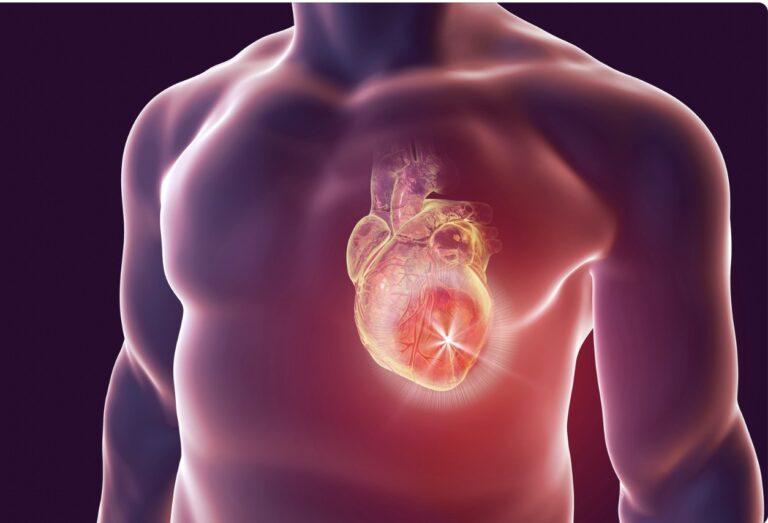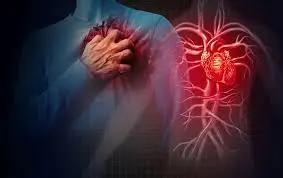Angina, a type of chest pain caused by reduced blood flow to the heart, is a common and often concerning symptom of acute coronary syndrome. While there are various forms of angina, the primary distinction lies between stable and unstable angina. Recognizing the differences between these two conditions is crucial for prompt diagnosis, appropriate treatment, and effective management of heart health.
Defining stable angina
Stable angina is the most common type of this condition. It is characterised by a predictable pattern, with chest pain or discomfort typically occurring during physical exertion, emotional stress, or exposure to cold temperatures. The pain is often described as a feeling of pressure, tightness, or heaviness in the chest, and typically subsides with rest or the use of angina-relieving medications.
Triggers and patterns
Individuals with stable angina can often identify the specific activities or circumstances that trigger their symptoms. These triggers may include climbing stairs, walking uphill, or engaging in other strenuous physical activities. The pain follows a consistent pattern, with each episode lasting a few minutes and responding well to rest or medication.
Underlying causes
In most cases, stable angina is the result of coronary heart disease, where the arteries supplying blood and oxygen to the heart become narrowed or blocked due to the buildup of fatty deposits called plaque. This condition, known as atherosclerosis, limits the heart’s ability to receive the necessary blood flow, particularly during times of increased demand, such as physical exertion.
Management
Stable angina is generally considered a manageable condition, as long as it is properly diagnosed and treated. With appropriate medication, lifestyle modifications, and, in some cases, interventional procedures, individuals with stable angina can often maintain a good quality of life and reduce their risk of more serious cardiovascular events.
Distinguishing unstable angina
In contrast to stable angina, unstable angina is a more serious and potentially life-threatening condition. Unstable angina does not follow a predictable pattern, chest pain may occur at rest, without any apparent trigger, or with less physical effort than in the past.
Unpredictable symptoms
Unstable angina is characterised by unpredictable chest pain that can be more severe, last longer, and not respond to the usual angina-relieving medications. The pain may also radiate to the shoulders, arms, neck, or jaw, and it may be accompanied by other symptoms, such as shortness of breath, nausea, or sweating.
Increased risk of heart attack
Unstable angina is considered a medical emergency because it can quickly progress to a heart attack. When the heart is not receiving enough oxygen-rich blood, the risk of permanent damage to the heart muscle increases significantly. Prompt medical attention is crucial to restore blood flow and prevent further complications.
Diagnosis
Diagnosing unstable angina often involves a combination of physical examination, electrocardiogram (ECG) monitoring, and blood tests to assess the levels of certain cardiac enzymes. Healthcare professionals may also order additional tests, such as stress tests or coronary angiography, to determine the underlying cause and severity of the condition.
Immediate treatment
The immediate treatment for unstable angina typically involves the administration of medications, such as antiplatelet drugs, anticoagulants, and nitrates, to help improve blood flow and reduce the workload on the heart. In some cases, more invasive procedures, such as coronary angioplasty or bypass surgery, may be necessary to address the underlying coronary artery disease.
Other types of angina
While stable and unstable angina are the two main forms, there are a few other less common types of angina that are worth mentioning:
Microvascular angina
Also known as cardiac syndrome X, microvascular angina is a condition in which the symptoms of angina are present, but the primary coronary arteries appear normal on diagnostic tests. This type of angina is believed to be caused by a dysfunction in the smaller, microscopic blood vessels that supply the heart muscle.
Variant (Prinzmetal’s) angina
Variant angina, also called Prinzmetal’s angina, is a rare form of the condition that is caused by a temporary spasm of the coronary arteries, rather than the buildup of plaque. This type of angina typically occurs at rest, often during the early morning hours, and can be relieved by the use of certain medications.
Refractory angina
Refractory angina is a challenging form of the condition that persists despite a combination of medications, lifestyle changes, and other interventions. Individuals with refractory angina experience frequent and debilitating chest pain that is difficult to manage effectively.
Importance of prompt diagnosis and treatment
Accurately differentiating between stable and unstable angina is important, as the two conditions require vastly different approaches to management and carry significantly different risks. Misdiagnosis or delayed treatment of unstable angina can have severe consequences, potentially leading to a life-threatening heart attack.
Seeking medical attention
If you experience any new or worsening chest pain, it is essential to seek immediate medical attention. Healthcare professionals can perform the necessary tests and examinations to determine the underlying cause and provide appropriate treatment. Prompt intervention can be the difference between a manageable condition and a potentially devastating outcome.
Management
Regardless of the type of angina, regular follow-up with a healthcare provider is essential to monitor the condition, adjust treatment and to take preventive measures to reduce the risk of more serious cardiovascular events. The risk factors for both angina include smoking, high blood pressure, high cholesterol levels, diabetes, obesity, a sedentary lifestyle, and a family history of heart disease. By including lifestyle modifications, such as dietary changes, and increased physical activity the condition can be managed better.
Conclusion
Recognising the distinct characteristics of stable and unstable angina is a vital to ensure timely and effective management of this heart condition. By understanding the differences in triggers, symptoms, and underlying causes, individuals can work closely with their healthcare providers to develop a plan to manage their heart health and reduce the risk of potentially life-threatening complications.
Sources
- Angina (Chest Pain) – Types – NHLBI, NIH
- Stable Angina: Causes, Symptoms and Treatment
- Angina – Symptoms and causes – Mayo Clinic
Medical Disclaimer
NowPatient has taken all reasonable steps to ensure that all material is factually accurate, complete, and current. However, the knowledge and experience of a qualified healthcare professional should always be sought after instead of using the information on this page. Before taking any drug, you should always speak to your doctor or another qualified healthcare provider.
The information provided here about medications is subject to change and is not meant to include all uses, precautions, warnings, directions, drug interactions, allergic reactions, or negative effects. The absence of warnings or other information for a particular medication does not imply that the medication or medication combination is appropriate for all patients or for all possible purposes.








